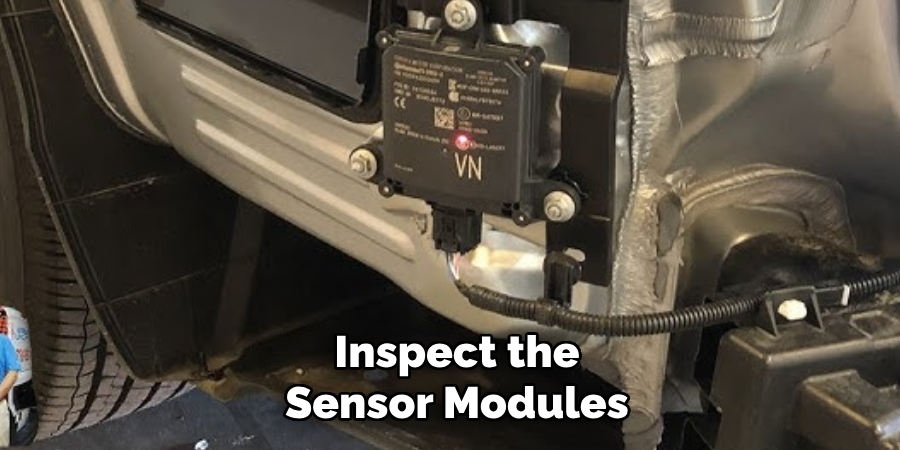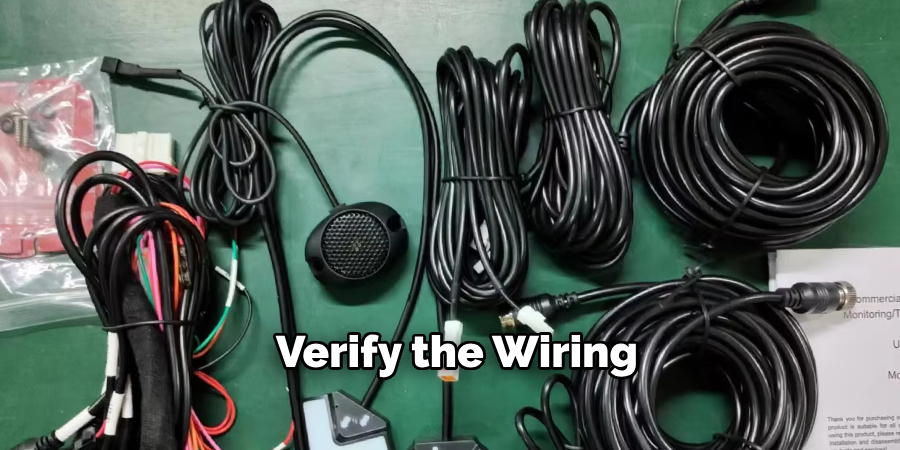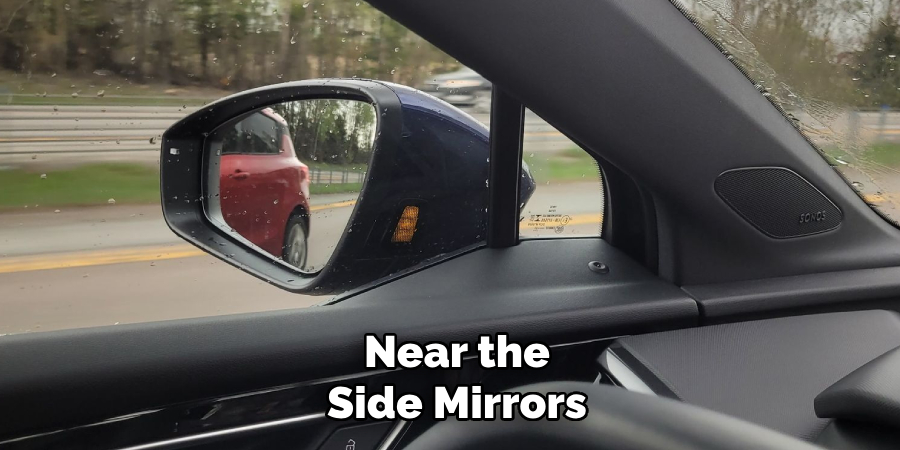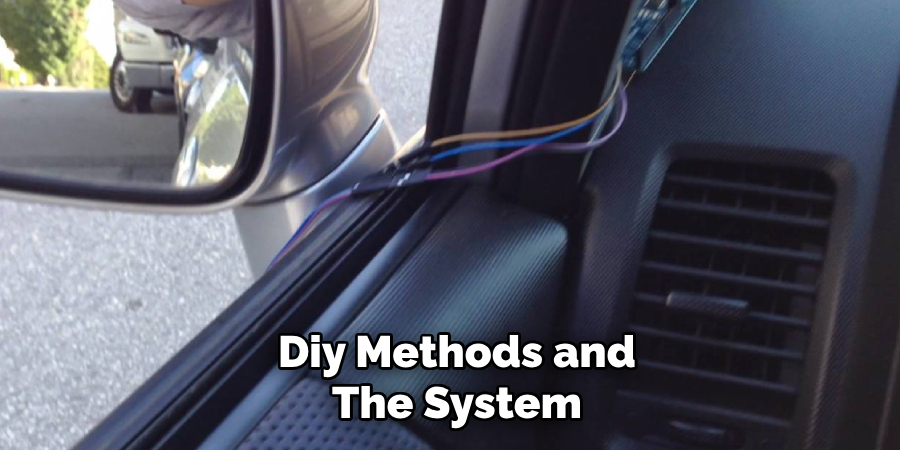A blind spot detection system is a crucial safety feature in modern vehicles, designed to alert drivers to vehicles or objects in their blind spots. When this system malfunctions, it can increase the risk of accidents and compromise road safety. Understanding the common issues and steps to troubleshoot and fix the blind spot detection system can help ensure it functions correctly and maintains its effectiveness in enhancing driving awareness. This guide will provide an overview of how to fix blind spot detection system and solutions to address them.

Importance of Blind Spot Detection (BSD) for Driver Safety
Blind Spot Detection (BSD) systems play a crucial role in enhancing driver safety by addressing one of the most significant challenges in vehicle operation—blind spots. These areas, which are not visible through standard mirrors, can lead to potential collisions, especially during lane changes or merging.
By continuously monitoring the surroundings and alerting drivers to nearby vehicles or obstacles, BSD systems provide an additional layer of awareness, reducing the risk of accidents. This technology is particularly beneficial in high-traffic conditions or when driving larger vehicles with limited visibility. Ultimately, BSD systems contribute to safer driving habits and greater confidence behind the wheel, making them an essential feature in modern automotive safety.
What Is a Blind Spot Detection System and How Does It Work?
A Blind Spot Detection (BSD) system is an advanced driver assistance feature designed to improve safety by addressing a common driving challenge—monitoring areas that are not visible to the driver through mirrors or direct line of sight. These unseen areas, often referred to as “blind spots,” can pose significant risks, especially when changing lanes or merging into traffic.
The system operates using sensors, cameras, or radar technology strategically positioned around the vehicle, typically on the side mirrors or rear bumper. These sensors continuously scan the surrounding environment for other vehicles or objects entering the driver’s blind spots. When a potential obstacle is detected, the system alerts the driver through visual indicators, such as a warning light on the side mirror, or auditory signals, such as beeps. Some advanced systems may even incorporate vibrating steering wheels or seats to capture the driver’s attention more effectively.
By leveraging real-time data and providing timely warnings, BSD systems not only enhance overall situational awareness but also empower drivers to make safer decisions on the road. Combined with other features like lane departure warnings or rear cross-traffic alerts, it forms part of a comprehensive suite of safety technologies that contribute to accident prevention and improved driving experiences.
10 Methods How to Fix Blind Spot Detection System
1. Inspect the Sensor Modules for Physical Damage or Obstruction

The first step in diagnosing a faulty blind spot detection system is to inspect the radar or ultrasonic sensors typically mounted in the rear bumper or side panels. These sensors are vulnerable to physical damage from minor collisions, debris, or even aggressive car washes. Dirt, ice, or accumulated road grime can also obscure the sensor’s view, leading to false readings or system errors. Carefully clean the sensor lenses with a soft cloth and a gentle cleaner. If any cracks or visible damage are present, the sensor may need replacement. Always ensure the surrounding area is clear of stickers, mud, or aftermarket accessories that may block the sensor’s line of sight.
2. Perform a System Reboot through the Vehicle’s Settings or Battery Reset
Sometimes, the blind spot detection system may simply need a reset to clear minor software glitches. Depending on the vehicle model, this can be done via the infotainment system or dashboard settings. Navigate to the driver assistance or safety menu and toggle the blind spot detection option off and back on again. If that fails, perform a soft reboot by disconnecting the negative terminal of the car battery for about 10 minutes. Reconnect the terminal, then restart the vehicle and check if the error clears. This method works especially well when the issue stems from temporary system faults or firmware conflicts.
3. Check for Diagnostic Trouble Codes (DTCs) Using an OBD-II Scanner
Modern vehicles store error codes when a system malfunctions, and blind spot detection is no exception. Use an OBD-II scanner—preferably one that supports advanced manufacturer-specific modules—to scan for diagnostic trouble codes. These codes can pinpoint which sensor or module is at fault. For instance, a code like C1A67 may indicate a sensor communication error, while U023B might reveal a problem with the blind spot control module itself. Interpreting these codes correctly can save time and guide your repair efforts efficiently, especially in complex multi-sensor systems.
4. Verify the Wiring Harness and Electrical Connections
A loose connector or broken wire can easily cause intermittent or total failure of the blind spot system. Inspect the wiring harness leading to the rear bumper or mirror-mounted sensors. Look for any signs of frayed wires, pinched cables, or moisture infiltration around connectors.

Use a multimeter to test for voltage and continuity, ensuring that power and ground lines are intact. If corrosion is present on the terminals, clean them thoroughly with electrical contact cleaner and re-seat the connectors. Electrical tape or heat shrink tubing can be used to insulate any exposed sections as a temporary fix until proper repairs are made.
5. Recalibrate the System after Repairs or Modifications
After replacing a sensor or making significant changes to the bumper or mirrors, recalibration is often necessary. Many systems require precise alignment to ensure they scan the correct angles around the vehicle. Recalibration can be done with a diagnostic tool or, for some makes like Honda or Toyota, may require a dealer-level scan tool. Some vehicles also use camera-based calibration procedures that involve driving a certain distance under specific conditions. Skipping this step may result in inaccurate readings or system shutdowns, so follow manufacturer guidelines strictly.
6. Update the Vehicle’s Software and Firmware
Automakers often release software updates to resolve known bugs or improve the functionality of driver assistance systems. If your blind spot detection system is malfunctioning and no hardware issues are present, check if there is a software update available. This may be done during routine service visits or via over-the-air (OTA) updates for newer vehicles. Updating the software can address compatibility issues, communication errors between control modules, and improve system responsiveness overall.
7. Ensure Mirror-Mounted Indicators Are Functioning Properly
In some vehicles, the warning indicators for the blind spot system are located in or near the side mirrors. If the sensors are working but no light or alert is visible, the issue may lie in the indicators themselves. Remove the mirror housing to check the LED bulbs or light strips for continuity. Replace faulty LEDs or wiring as needed. Also, ensure the mirror glass isn’t excessively tinted or cracked, as that could reduce visibility of the alert signals, thus affecting the driver’s ability to react promptly.

8. Test Vehicle Under Normal Driving Conditions
After completing sensor cleaning, system resets, or component replacements, it’s important to test the blind spot detection system in real driving scenarios. Drive on a multi-lane road and monitor how the system responds when cars approach your blind spots. If the indicators activate properly and alerts are timely, the repair has likely been successful. If the system still misfires—such as showing alerts when nothing is there or failing to respond to nearby vehicles—re-examine your calibration and sensor alignment.
9. Address Weather-Related or Environmental Factors
Environmental conditions such as heavy rain, snow, fog, or even intense sunlight can temporarily interfere with sensor readings. If your blind spot detection system malfunctions only during certain weather conditions, it may not indicate a hardware fault but a limitation of the technology. To mitigate this, ensure that sensors are always clean and check whether the vehicle has any firmware options to adjust sensor sensitivity. Additionally, parking near strong electromagnetic sources or large metal structures can cause signal interference—relocating or shielding sensor areas may be required in persistent cases.
10. Consult a Certified Technician or Dealership if Issues Persist
If you’ve exhausted all DIY methods and the system continues to show faults, it’s advisable to consult a certified technician or return to the dealership. Modern driver-assist systems often involve proprietary software and encrypted modules that require manufacturer-specific diagnostic tools. The technician can perform in-depth diagnostics, module reprogramming, or advanced recalibration procedures that aren’t accessible to most consumers. While professional service may come at a cost, it ensures long-term reliability and preserves safety compliance.

Conclusion
Repairing a blind spot detection system requires a methodical approach—beginning with simple checks like sensor cleaning and ending with advanced recalibration or module replacement if needed. By carefully following the ten methods outlined above, you can systematically troubleshoot and fix most common issues with these systems. Thanks for reading, and we hope this has given you some inspiration on how to fix blind spot detection system!
About
Safety Fic is a distinguished figure in the world of Diy design, with a decade of expertise creating innovative and sustainable Diy solutions. His professional focus lies in merging traditional craftsmanship with modern manufacturing techniques, fostering designs that are both practical and environmentally conscious. As the author of diy, Safety Fic delves into the art and science of Safety Fic-making, inspiring artisans and industry professionals alike.
Education RMIT University
(Melbourne, Australia) Associate Degree in Design (Safety Fic) Focus on sustainable design, industry-driven projects, and practical craftsmanship. Gained hands-on experience with traditional and digital manufacturing tools, such as CAD and CNC software.
Nottingham Trent University
(United Kingdom) Bachelor’s in diyfastly.com and Product Design (Honors) Specialized in product design with a focus on blending creativity with production techniques. Participated in industry projects, working with companies like John Lewis and Vitsoe to gain real-world insights.
Publications and Impact
In diy, Safety Fic his insights on indoor design processes, materials, and strategies for efficient production. His writing bridges the gap between artisan knowledge and modern industry needs, making it a must-read for both budding designers and seasoned professionals.
